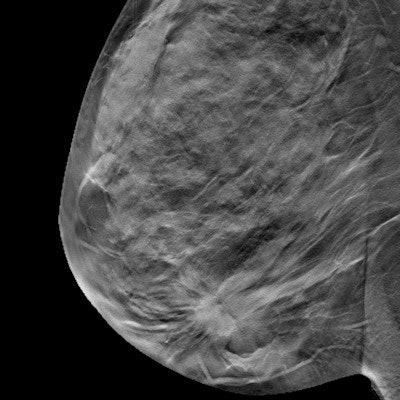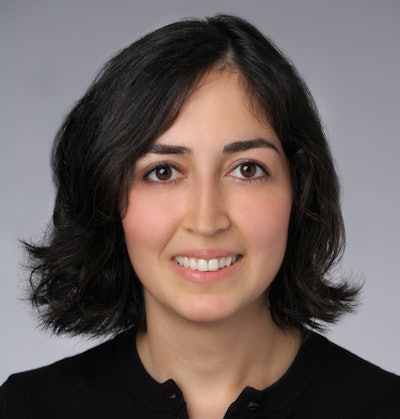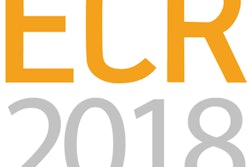
Just under 20% of women in the Medicare population received digital breast tomosynthesis (DBT) exams in 2015, the first year of Medicare coverage for the technology, according to research presented at the recent RSNA 2017 meeting. Does the figure mean DBT use is lagging in the federal system -- or that it's taking hold?
The findings would seem worrisome, as DBT has been shown to improve the diagnostic accuracy of breast cancer screening and diagnosis. But presenter Dr. Gilda Boroumand from Thomas Jefferson University Hospital in Philadelphia had a different interpretation.
"Yes, fewer than 20% of breast cancer screening studies were performed with tomosynthesis in 2015, but that is still a large number considering the magnitude of effort and cost that is necessary for practices to acquire the technology," she told AuntMinnie.com. "The Medicare data are very useful. They confirm that tomosynthesis has crossed over from the experimental to the clinical realm and show that radiologists really have embraced this new technology."
Optimal uptake?
 Dr. Gilda Boroumand from Thomas Jefferson University Hospital.
Dr. Gilda Boroumand from Thomas Jefferson University Hospital.The first commercial digital breast tomosynthesis system was cleared by the U.S. Food and Drug Administration (FDA) in 2011; in 2015, the U.S. Centers for Medicare and Medicaid Services (CMS) established reimbursement procedure codes for DBT when it is performed in conjunction with conventional digital mammograms, both screening and diagnostic. Private payor coverage varies widely, according to Boroumand.
She and her colleagues sought to investigate the volume of screening and diagnostic DBT exams performed in the Medicare population in 2015. They reviewed national Medicare Part B Physician/Supplier Procedure Summary Master Files for that year, which included 37.5 million enrollees, and calculated total volume using global and professional claims. The researchers also analyzed the exams by interpreting physician specialty.
In 2015, 5.7 million screening bilateral digital mammography exams were performed in the Medicare population. Of these, 18.9% were DBT exams, the group noted. Of all mammograms that year, 96% were performed by radiologists; radiologists used DBT in almost 20% of screening and just over 15% of diagnostic exams.
| DBT as percentage of total Medicare mammograms in 2015 | ||
| Screening DBT | Diagnostic DBT | |
| Radiologists | 19.1% | 16.4% |
| Nonradiologists | 16.7% | 8.7% |
The fact that DBT use in the Medicare population is less than 20% of mammography exams doesn't exactly fit with other studies, which have shown a greater uptake of DBT, according to Boroumand. She cited a 2017 study by Gao et al that found that nearly 70% of radiologists (identified via an RSNA database and representing various practice types) were using DBT; about a third were using the technology for all screening mammograms.
But the Medicare statistic is actually in line with the number of DBT devices accredited under the Mammography Quality Standards Act (MQSA) in the U.S., Boroumand noted. In June of 2016, there were 3,362 DBT units and 12,508 full-field digital mammography units (21%), and in October 2017, there were 5,140 DBT units and 12,787 mammography units (28%).
"Our findings seem to be in line with the number of tomosynthesis units in the U.S., which intuitively makes sense," she said. "Based on the MQSA data, it appears that tomosynthesis utilization has been rapidly increasing these past two years."
Lack of reimbursement
DBT continues to offer promise for breast cancer screening, she concluded. But its uptake is hindered by a lack of reimbursement standardization.
"The lack of widespread coverage for privately insured patients has likely hindered the conversion to tomosynthesis," Boroumand told AuntMinnie.com. "I do hope there will be a forward-moving cycle, with increased private insurer coverage of tomosynthesis leading to more practices converting to the technology."




















